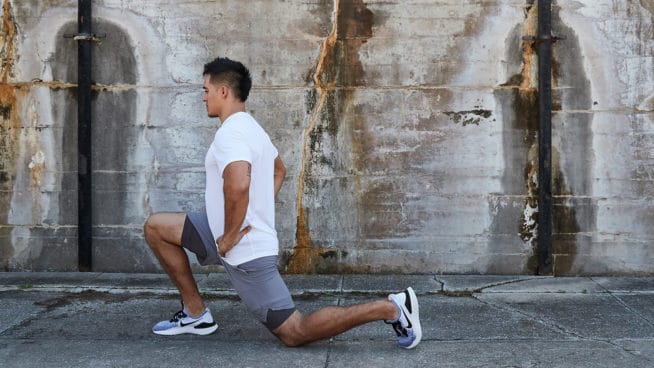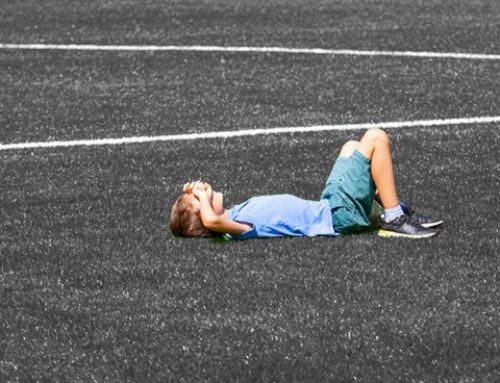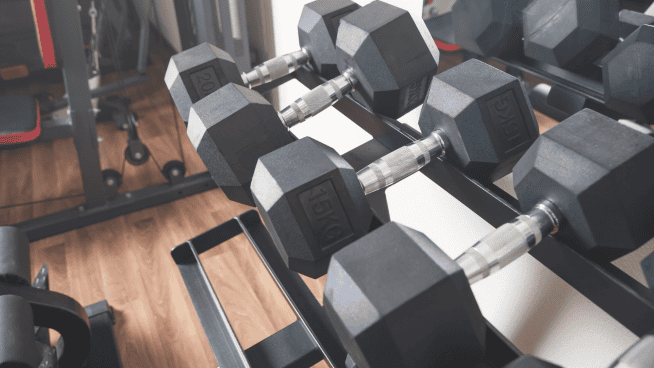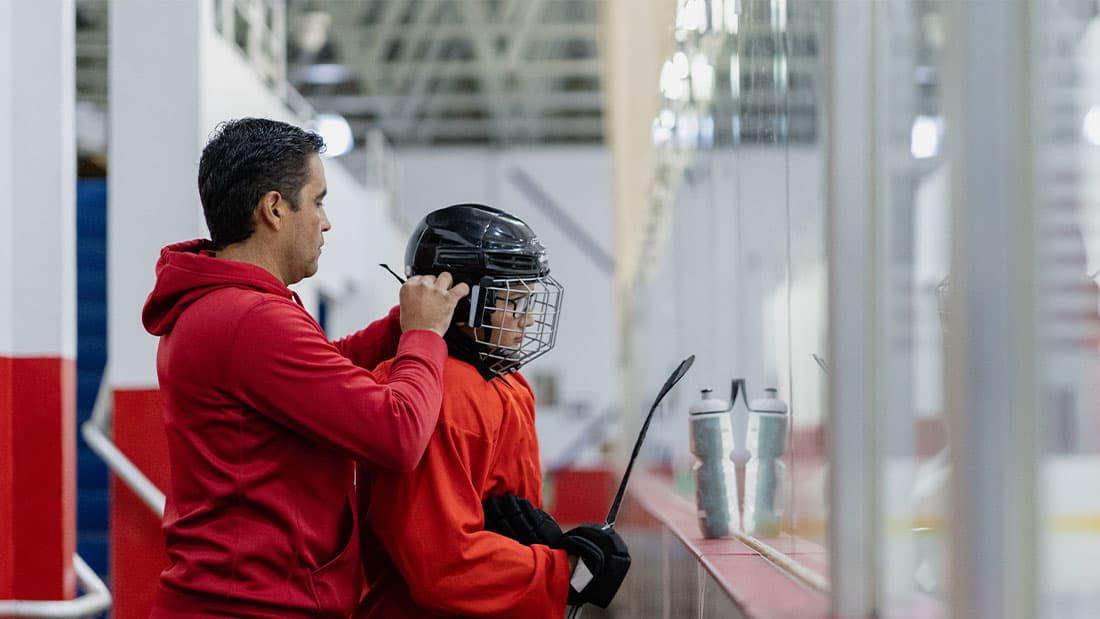Sled Drag Variations That Build Strength, Speed and Size
The sled, or prowler, is one of those tools that can be used to pursue several goals, depending on how it’s used. Strength, speed, size and even injury prevention and rehab are all possible using Sled Drags in your programming.
Sleds and prowlers can be loaded in many ways, depending on what you are looking to accomplish. For example, loading a prowler with heavy weight and reverse dragging it develops strength in the lower body. But if you reduce the load slightly, it can be a useful rehab exercise for those with knee problems.
RELATED: 5 Epic Sled Exercises That Build Faster, Stronger Athletes
Technical Basics
Keep Moving. The hardest thing to do is stop and start over. Constant movement makes whatever load you pick slightly easier to drag.
Small Steps. Similarly, taking small steps helps you keep your momentum going and also keep your body in alignment.
Body Alignment. As with any exercise, keeping your shoulders, ribs and hips in alignment is essential for success. It ensures that your core muscles are performing as they should, and that the movement is targeted where it will have the greatest benefit.
RELATED: 5 Sled Exercises That Will Make You Faster and Stronger
Prowler
Reverse Drags. The Reverse Drag is beneficial for those looking to build their quads or back, but it’s also effective for rehabbing knee injuries and creating tension in the upper back. They can be done in one of two ways, either with straight arms or in an isometric row position. Both are effective.
Forward Drags. For a sprinter (or any athlete for that matter), the ability to accelerate can have a dramatic effect on success. Whether it’s a defensive tackle getting off the line in football, or a sprinter getting out of the blocks for the 100m, the first few steps are critical. That’s why Forward Sled Drags are great. They force you into a forward lean, the same movement pattern you use during the acceleration phase. In addition, when you drag a heavy sled, you’re building strength with each step.
Crawls. Crawling is an underrated core exercise. When done correctly, it can really light up your abdominal muscles. By throwing on a harness and attaching it to the sled, you create more resistance, forcing your whole body to work much harder.
RELATED: 5 Sled Training Drills for Speed and Power
Get into a crawl position on all fours, lift your knees off the ground and slowly move your opposite arms and legs. Avoid stopping and starting. You want to keep the sled moving to make crawling “easier.”
Prowler Circuit
This Circuit will have your quads screaming by the end:
- Reverse Drag – 30 feet
- Crawl – 30 feet
- Forward Drag – 30 feet
Lateral Drags. On the surface, this looks like an easy exercise, but when you start moving, you realize that it challenges your core more effectively than any Crunch or Russian Twist. Much like the Pallof Press, Lateral Sled Drags work on the anti-rotation function of the core.
It’s vital to keep moving, because if you don’t, you’ll lose the advantages of the exercise. Start with your arms straight out in front of your chest, much like a Pallof Press, and take small crossover steps for the required distance. Lock in your shoulders by squeezing your armpits. This creates better shoulder stability, which in turn engages your core musculature, rather than your shoulders.
Overhead Drags. Like an Overhead Carry, the Overhead Drag maintains shoulder stability and keeps the ribs over the hips. Short physics lesson: longer lever equals harder exercise. So by putting your arms and path of resistance overhead and far from your body, you create more tension throughout the rest of your body.
Either grab and hold the straps or let them rest against your wrists. Keeping them on the wrists tends to work better, since there is less motivation to actively pull down on the straps to keep the sled moving. Once in correct starting position, start walking with slow, small steps.
T-Y Drags. T-Y Drags are similar to Overhead Drags, except your arms are either in a Y position, or a T position. This changes the way your shoulder and back muscles contract and creates stability. In addition to promoting strength gains in the upper back and shoulders, the drills can help those who sit at a desk all day with less than ideal posture.
RELATED: 4 Reasons Why Sled Training is Perfect for Athletes
Sled Circuit
- T-Drags – 30 feet
- Lateral Drag Right – 30 feet
- Y-Drags – 30 feet
- Lateral Drag Left – 30 feet
- Overhead Drag – 30 feet
RECOMMENDED FOR YOU
MOST POPULAR
Sled Drag Variations That Build Strength, Speed and Size
The sled, or prowler, is one of those tools that can be used to pursue several goals, depending on how it’s used. Strength, speed, size and even injury prevention and rehab are all possible using Sled Drags in your programming.
Sleds and prowlers can be loaded in many ways, depending on what you are looking to accomplish. For example, loading a prowler with heavy weight and reverse dragging it develops strength in the lower body. But if you reduce the load slightly, it can be a useful rehab exercise for those with knee problems.
RELATED: 5 Epic Sled Exercises That Build Faster, Stronger Athletes
Technical Basics
Keep Moving. The hardest thing to do is stop and start over. Constant movement makes whatever load you pick slightly easier to drag.
Small Steps. Similarly, taking small steps helps you keep your momentum going and also keep your body in alignment.
Body Alignment. As with any exercise, keeping your shoulders, ribs and hips in alignment is essential for success. It ensures that your core muscles are performing as they should, and that the movement is targeted where it will have the greatest benefit.
RELATED: 5 Sled Exercises That Will Make You Faster and Stronger
Prowler
Reverse Drags. The Reverse Drag is beneficial for those looking to build their quads or back, but it’s also effective for rehabbing knee injuries and creating tension in the upper back. They can be done in one of two ways, either with straight arms or in an isometric row position. Both are effective.
Forward Drags. For a sprinter (or any athlete for that matter), the ability to accelerate can have a dramatic effect on success. Whether it’s a defensive tackle getting off the line in football, or a sprinter getting out of the blocks for the 100m, the first few steps are critical. That’s why Forward Sled Drags are great. They force you into a forward lean, the same movement pattern you use during the acceleration phase. In addition, when you drag a heavy sled, you’re building strength with each step.
Crawls. Crawling is an underrated core exercise. When done correctly, it can really light up your abdominal muscles. By throwing on a harness and attaching it to the sled, you create more resistance, forcing your whole body to work much harder.
RELATED: 5 Sled Training Drills for Speed and Power
Get into a crawl position on all fours, lift your knees off the ground and slowly move your opposite arms and legs. Avoid stopping and starting. You want to keep the sled moving to make crawling “easier.”
Prowler Circuit
This Circuit will have your quads screaming by the end:
- Reverse Drag – 30 feet
- Crawl – 30 feet
- Forward Drag – 30 feet
Lateral Drags. On the surface, this looks like an easy exercise, but when you start moving, you realize that it challenges your core more effectively than any Crunch or Russian Twist. Much like the Pallof Press, Lateral Sled Drags work on the anti-rotation function of the core.
It’s vital to keep moving, because if you don’t, you’ll lose the advantages of the exercise. Start with your arms straight out in front of your chest, much like a Pallof Press, and take small crossover steps for the required distance. Lock in your shoulders by squeezing your armpits. This creates better shoulder stability, which in turn engages your core musculature, rather than your shoulders.
Overhead Drags. Like an Overhead Carry, the Overhead Drag maintains shoulder stability and keeps the ribs over the hips. Short physics lesson: longer lever equals harder exercise. So by putting your arms and path of resistance overhead and far from your body, you create more tension throughout the rest of your body.
Either grab and hold the straps or let them rest against your wrists. Keeping them on the wrists tends to work better, since there is less motivation to actively pull down on the straps to keep the sled moving. Once in correct starting position, start walking with slow, small steps.
T-Y Drags. T-Y Drags are similar to Overhead Drags, except your arms are either in a Y position, or a T position. This changes the way your shoulder and back muscles contract and creates stability. In addition to promoting strength gains in the upper back and shoulders, the drills can help those who sit at a desk all day with less than ideal posture.
RELATED: 4 Reasons Why Sled Training is Perfect for Athletes
Sled Circuit
- T-Drags – 30 feet
- Lateral Drag Right – 30 feet
- Y-Drags – 30 feet
- Lateral Drag Left – 30 feet
- Overhead Drag – 30 feet











